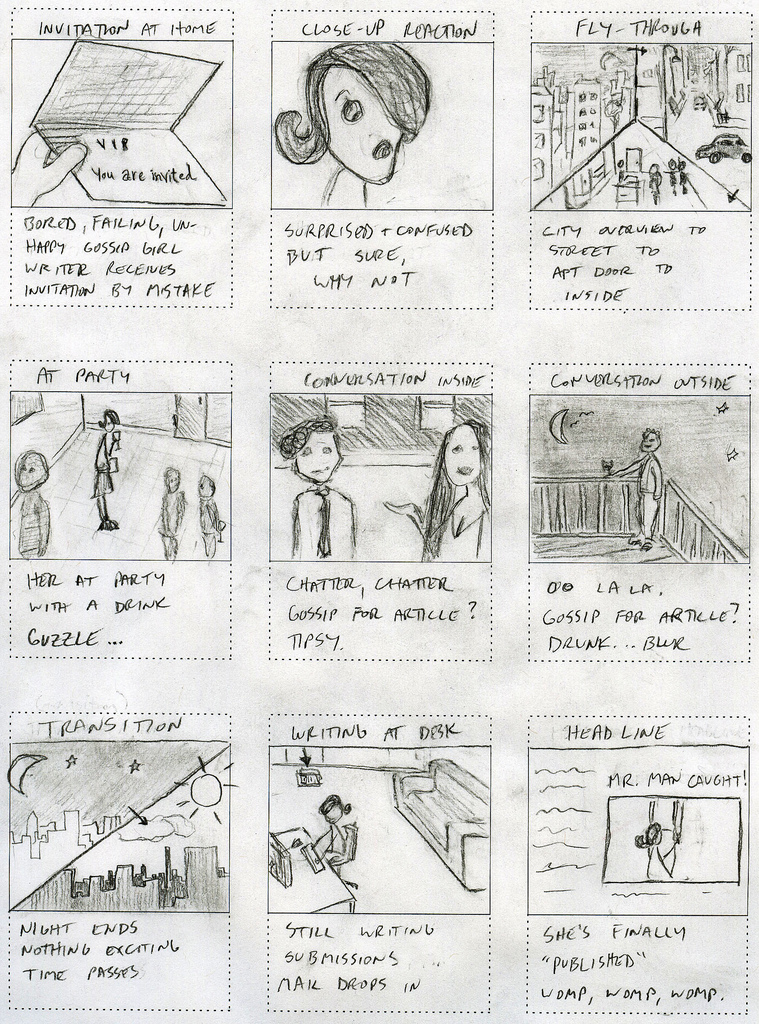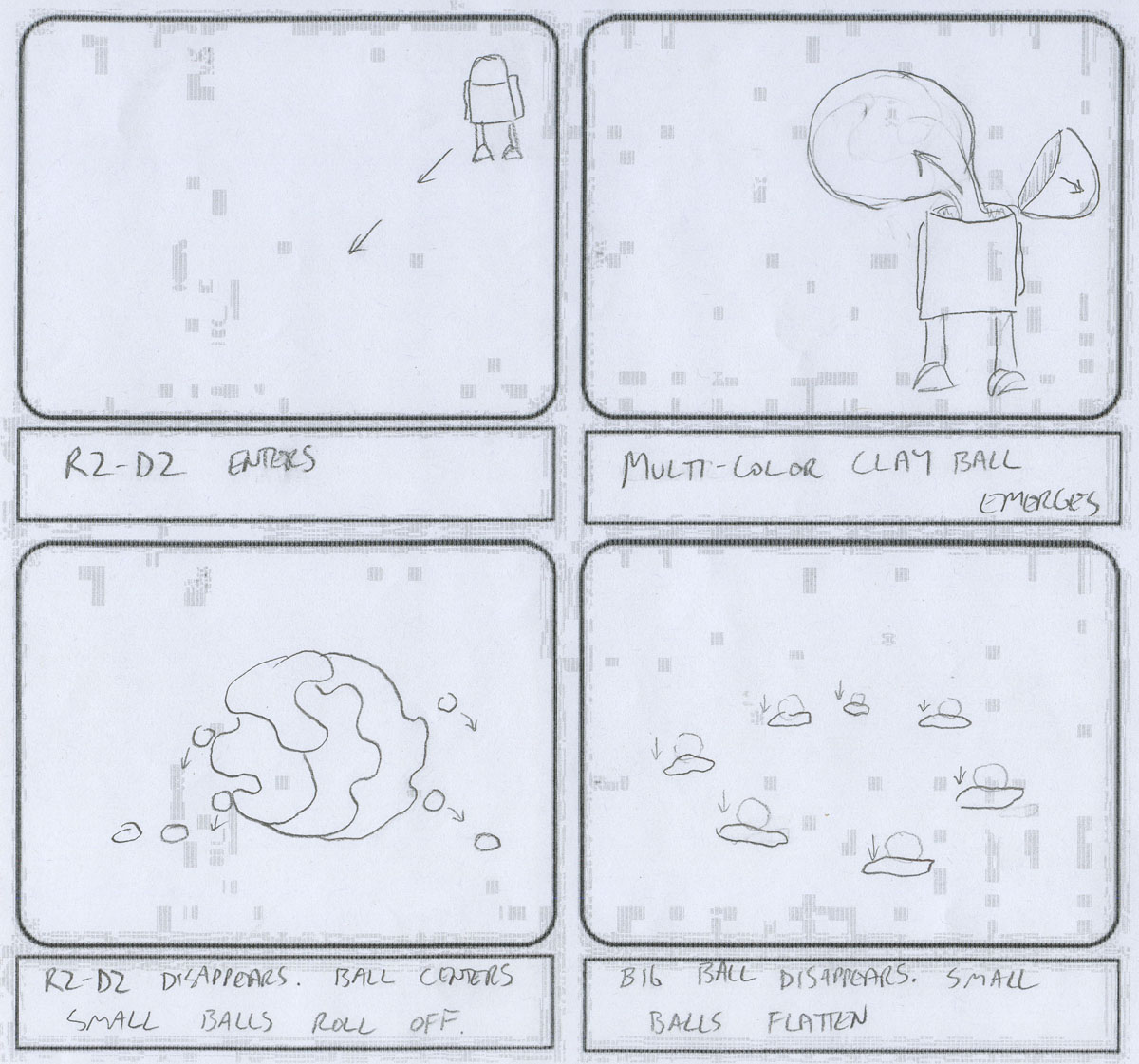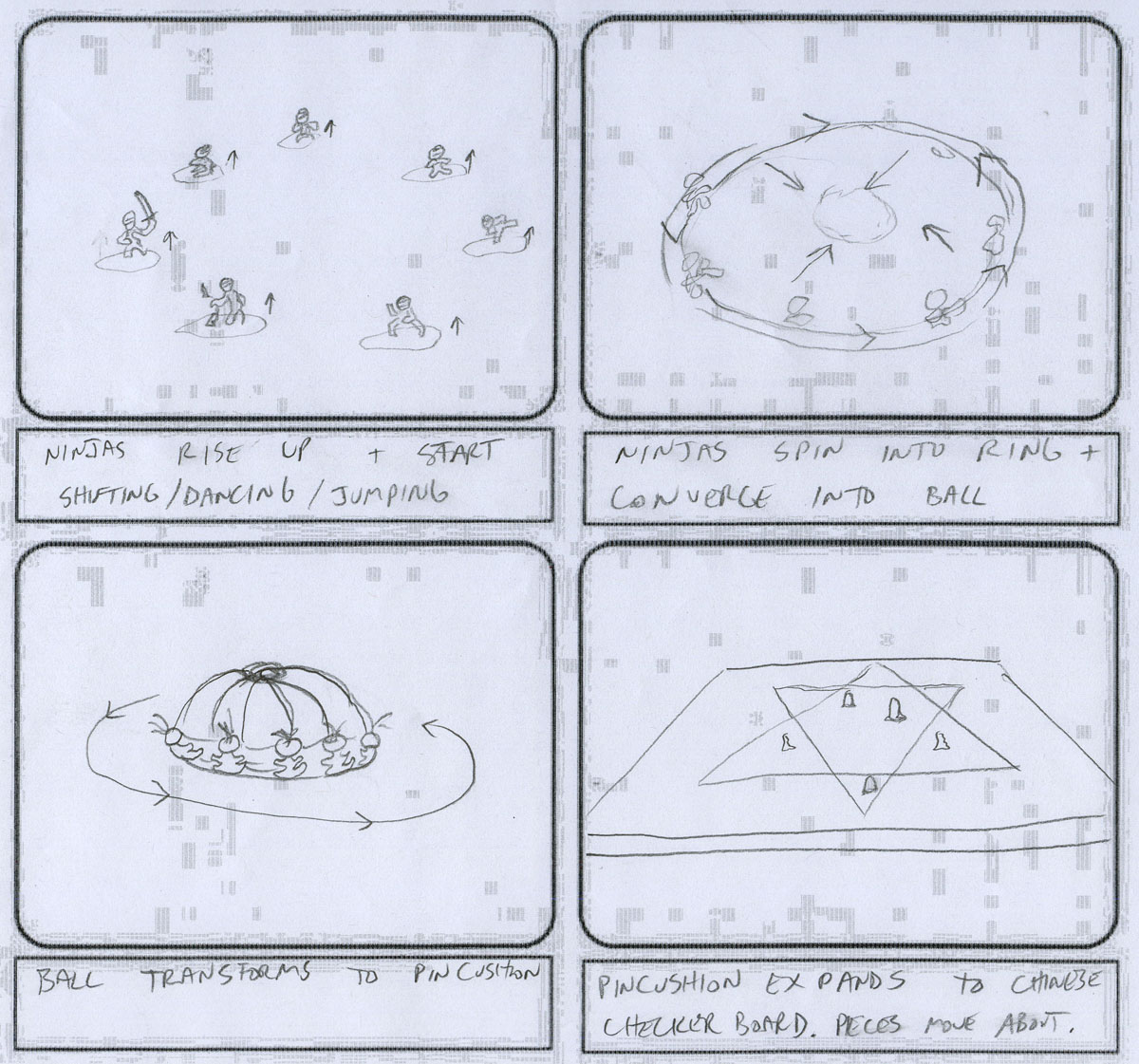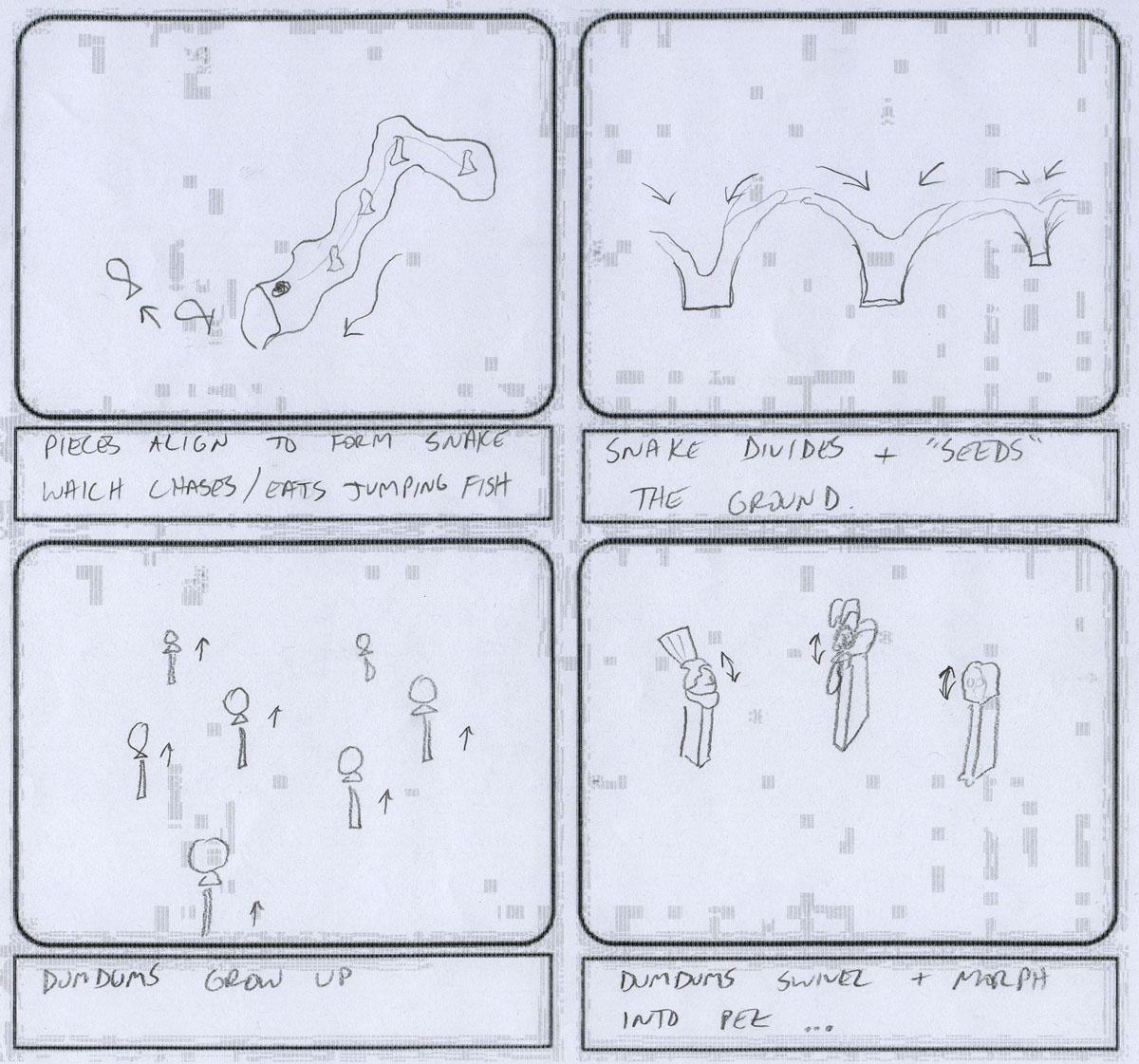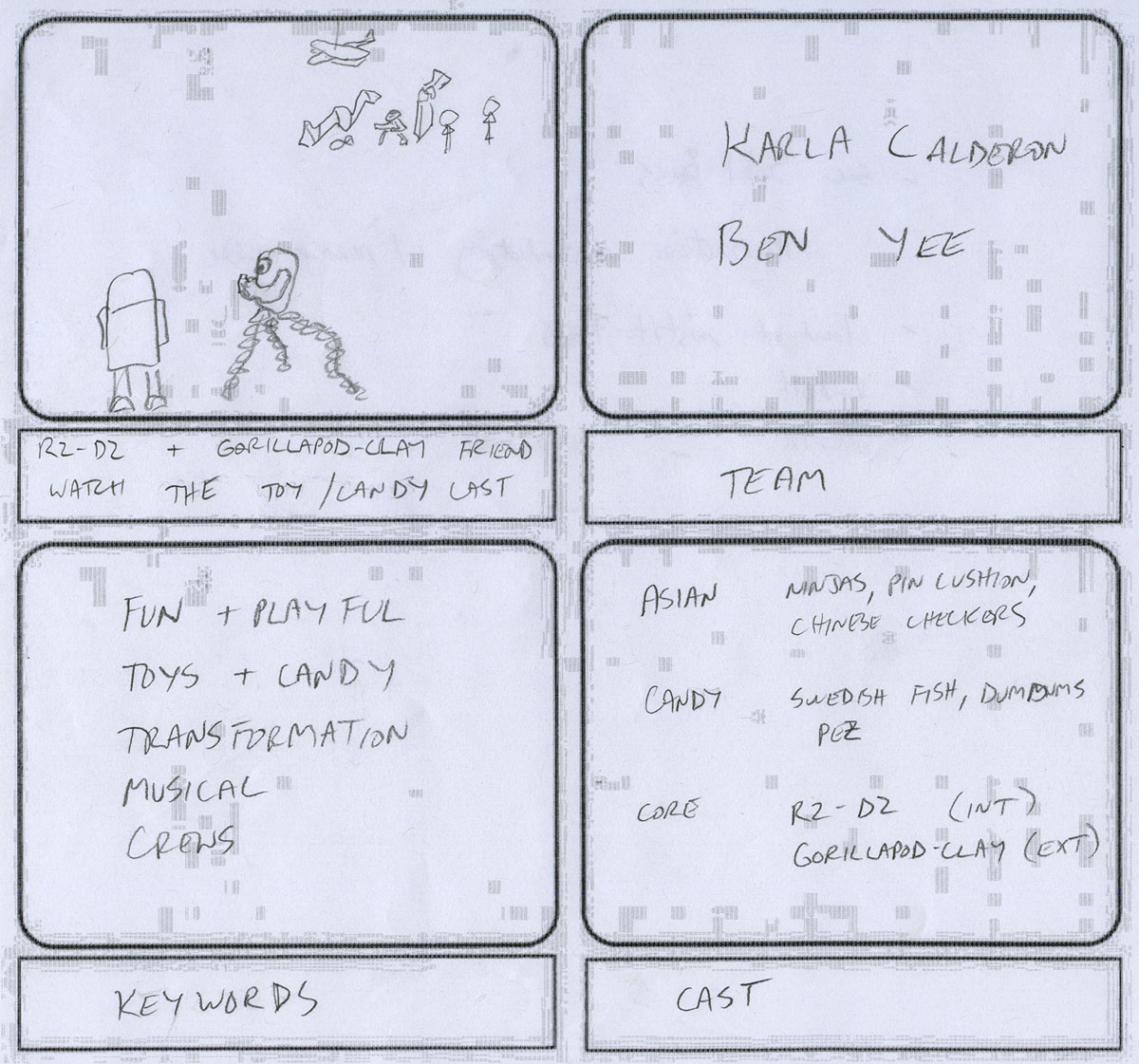Month: February 2009
More
I’ve been struggling to find a problem that feels right to address with my thesis project. My initial thesis ideas were unique in some ways, but here are a three reasons I’m back at the drawing board:
1. thatgamecompany.com
2. delicious-monster.com
3. geni.com
Smile capturing is a new idea that might have some traction, but then again, maybe not. In the meantime, below is a partial list of people / topics I’ve been investigating:
Linda Stone – continuous partial attention
Merlin Mann – getting things done
Martin Seligman – positive psychology
Zoran Josipovic – nonduality
Mihaly Csikszentmihalyi – flow theory for optimal experience
Jenova Chen – flow in games
Johan Huizinga – homo ludens
Nathan Eagle – reality mining
Joseph Beuys – fluxus movement
Guy Ernest Debord – situationists + spectacle
Zak Miller – feel good day
Jane McGonigal – arg’s for social good
—
On another note, I installed and played Crayon Physics for the first time today. I also attended a talk by Joshua Spodek about Submedia World. Both were pretty satisfying. Thanks, Syed. Thanks, ITP.
Wikki Wibble Wobble
Here’s a claymation video that Karla C. and I produced over the last two weeks. The patience needed for working with armature wire and clay was serious, and the post-production editing was not a game. However, I think we learned and enjoyed ourselves plenty. We aimed to include a lot of playful energy, color, and motion, so what we came out with was a pretty fun and abstract result, which is cool. But I think future versions would offer more of a story and develop character personalities / individual movements a bit more. Enjoy!
Morning Kickz Off v2
I added a layer of polish to this animation, so it isn’t too bad now, but it needs speakers that produce good bass for the right effect.
Birth of concept…phew
I’ve realized that my wide-ranging, preliminary ideas including a flow driven game, a home inventory system, and a social networking site, were fundamentally ways to improve people’s quality of life. In the sense that these ideas would theoretically help people out, one could see them as remedies. If these would be remedies, what would be the singular disease? Life itself? Is life that terrible that I/we need remedies? Sometimes. But who am I to isolate specific challenges and “prescribe medicine” for others? I could identify areas in my own life to address, but I don’t want this project to be about me and my problems. So what? Well, as a human being, I know that a balanced, healthy existence is seriously complicated, but one simple truth is that it must include some good stuff.
By going through more internal and external discussions, my difficulty of having too many broad ideas has become partially solved by focusing on a more specific, ultimate goal: creating happiness (perhaps defined as “feeling good”) through flow (the psychology of optimal experience). In other words, I want to enhance one’s immediate feelings through satisfying personal-awareness and adrenalin-inducing social interactions using various methods (i.e. technologies, behaviors, events, competitions, products). Thanks, thesis support network!
My next steps:
– contact the Feel Good Day folks (Thanks, Taylor!)
– identify several additional experiments around Mihaly Csikszentmihaly’s Theory (flow), and study them.
– flesh out a detailed list of methods for cultivating “flowareness” and spreading its effects
Morning Kickz Off v1
This is an initial-low-res version of a pixillation project that I’m working to complete in the next week. From the beginning, I knew I wanted to use at least part of my sneaker collection but wasn’t exactly sure how, so I spent a couple hours looking at examples, reading, and scribbling down possibilities; this did not allow me to generate even one satisfying idea, so I decided to start shooting without story-boarding anything. Once I did, the basic concept slid magically into my mind, and progress was mine. Looking forward, I want to spend some more time editing the pace, adding sound / music, a title screen, and re-doing the credits.
Also, my lady helped me grab a big chunk of the footage and provided this clever title too — muchas gracias!
Boxee
Waltz With Bashir

Waltz With Bashir by Ari Folman is an animated documentary about the 1982 Lebanon War. Seeing it today was an intense experience, especially when combined with the partial shock of returning from a slow, tropical environment to one filled with noise and tasks (trip to Honduras/return to NYC). I honestly didn’t expect to learn so much or be so engaged, but Folman’s film completely captured my attention with its various animation techniques, immersive sound elements, and dream-like scenes; I was impressed throughout it. The extreme detail put into representing motion and creating moods was equally supported by discussions involving stimulating subjects such as perception and memory. While I was aware that the film would end by introducing live video footage of slaughtered civilians, I couldn’t predict my reaction. I watched, looked away, and peeked a bit longer. Fortunately, the credits appeared after a few moments, and I left the cinema . . . feeling numbed. My curiosity to better understand the circumstances of the massacre led me to do some reading online, and my further processing allowed me to appreciate the stylistic decisions taken in using animation and video to impact viewers, both artistically and politically. Overall, seeing Waltz With Bashir was worth the twelve dollars and strengthened the argument that animation isn’t always childlike and bright.
Flip-book
It had probably been almost two decades since I made a flip-book, so it was great to make another last week. I started by brainstorming a few ideas, sketching basic visuals, and then listing a few descriptive words. Of the seven ideas that came to mind, several involved human figures. I ended up going with the final idea based on three figures. Check it out below.
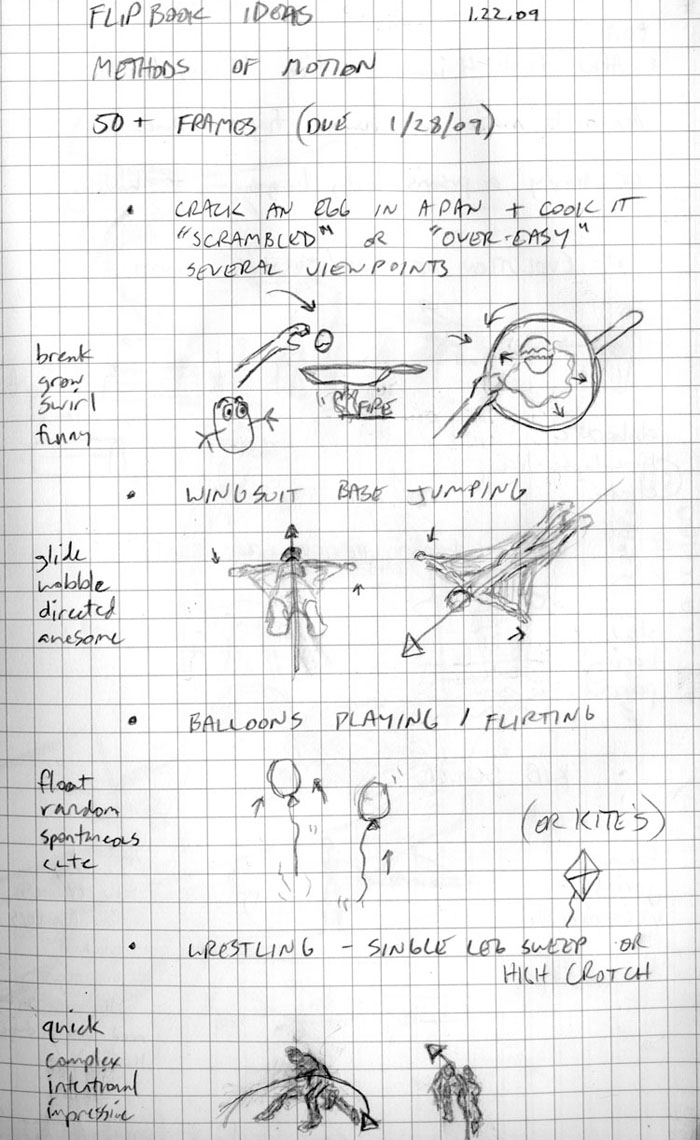
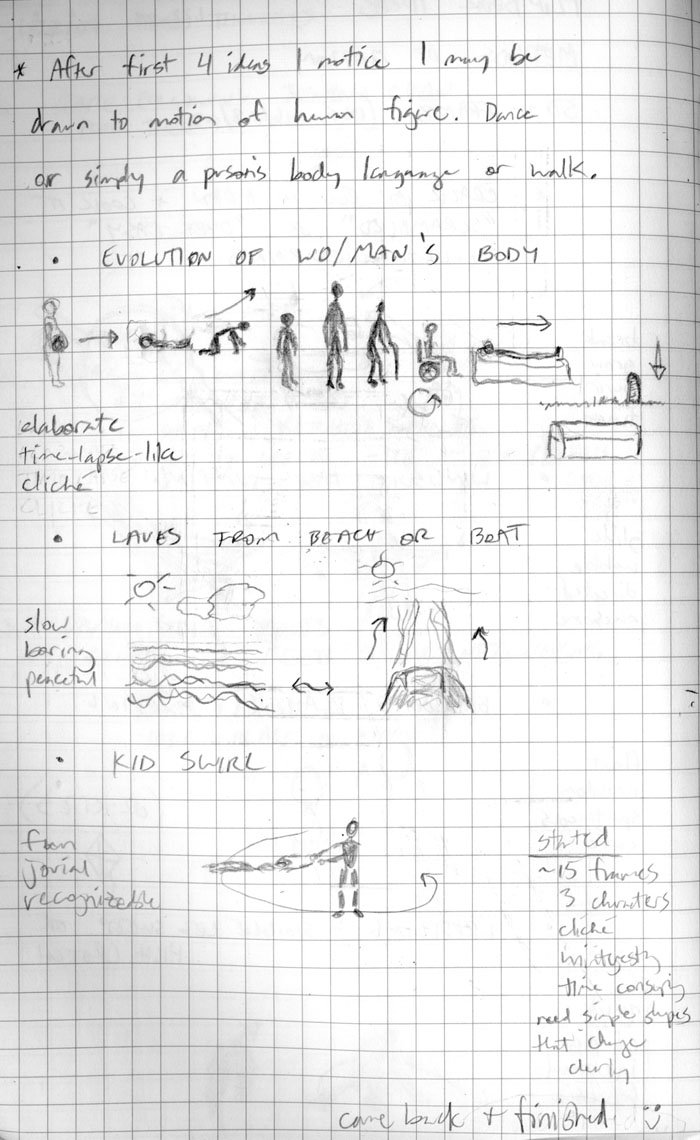
Thesis. Begin.
My first thesis group meeting with Kevin Slavin of area/code was tonight. It was mentally stimulating and challenging overall, which is ideal I think. We’re having a follow-up later this week. I’m glad, because I could use more feedback on my initial thoughts (below).
CONTEXT
In brainstorming for a thesis project, it seems natural to consider my immediate life and environments as the context. As a young adult living in a major US city, I find myself hustling to maintain balance. When I say balance, I’m referring to maintaining healthy social relationships, continuously learning and evolving my way of thinking, contributing professionally and creatively, improving my physical fitness level, personally reflecting, and basically keeping mental sanity. I think of myself as open-minded, laid-back, adaptable; a worker, a one-on-one communicator, and a dreamer. As such, it’s been challenging for me to focus on a single concept and go with it, even though I recognize that the thesis project is just one project among others. Several goals and user groups have generally driven my thesis thinking:
GOALS
Game + Play
Why? Game and play seem intuitively attractive to humans, and I think it’s a good place to start in terms of doing any project. I’ve had modest experience learning about game design and creating systems for play, and I’m motivated to start learning more about the game industry. Last year, I made two iterations of a Flash game, which was only partially satisfying. Since then, I have been inspired by Jenova Chen’s games, Flow and Cloud, and am currently reading Flow by Mihaly Csikszentmihalyi. I’ve also started to read Rules of Play by Katie Salen and Eric Zimmerman. PacManhattan, B.U.G., and other projects of “area/code” also pull me to the game side of things.
Global Application + Cultural Bridging
Why? I grew up as “a mixed kid” (aka biracial) in a pretty homogenous and uneventful town/suburb in Ohio, leaving me with very little “hometown” pride and a relatively unique perspective. I spent the next four years outside of Boston and the last five here in New York, which naturally expanded my perspective. My professional experiences at NYU tied directly to international programs and allowed me to stretch my awareness and exposure. A class at ITP (Hybridity and Globalization) and books such as the End of Poverty by Jeffrey Sachs and Making Globalization Work by Joseph Stiglitz have me thinking more deeply at the global level. The world is huge and diverse, but I’d like to undertake a thesis that helps connect divided groups and is universally applicable.
Generational bridging
Why? We lose valuable wisdom between generations due to a lack of positive communication and/or methods to store information. I believe children, adolescents, young adults, and elders, can learn a lot from each other. Traditions, stories, and languages should have well-designed processes and tools to help them survive over time. This topic is influenced by my girlfriend’s culture and language (Garifuna), my own family history and ancestral dialect (Toisanese), and positive relationships I’ve experienced with people who are significantly older and younger than me.
Quality of life
Why? Life is what we all experience, so I wonder why we don’t focus more on optimizing it. Linda Stone, who speaks about Continuous Partial Attention, is also a source of inspiration for this aim.
AUDIENCE
My peers + me
Why? Theoretically I know this group best, so I could design best for them.
Anyone detached from technology + the Internet
Why? We have these tools that enable progress. I wonder why we don’t try more to get everyone on the same playing field.
Parents
Why? Parents typically raise their children, who grow up and become the next generation, so addressing parents is a way of addressing education. Research has shown that “helicopter parents,” who hover over their children might limit their development or natural possibilities. “Empty-nesters” might feel stuck and could possibly use something to spark life up again.
POSSIBLE IDEAS
1. Make a game that follows Jenova Chen’s thinking, but more social. (research / prototyping)
Initially, this idea would allow me to continue learning about Flow Theory, other mental states, and game design, which I would want to do regardless of a thesis assignment. The first step would be to absorb as much foundation about games and play as possible. Next, I would need to play and critique as many games as possible in order to develop a concept for my own game. Finally, I would need to prototype and user test repeatedly.
2. Create an inventory system for an individual and/or household to organize personal possessions. (physical computing / code)
First, I would determine exactly which information should be stored. One application I have thought about is tagging each pair of sneakers in order to keep basic information such as brand, style, “age” and fashion patterns. Another potential application is tagging (or perhaps only scanning) every food item in the kitchen in order to have an instant list of needs for grocery shopping. This could be beneficial not only for busy individuals and families, but also seniors who may have others shop for them or limited opportunities to shop themselves. An additional purpose of this inventory would be for pushing available ingredients to the web for possible recipes, therefore giving the cook a method of discovery. To pursue this project, I would research the best method for scanning, possibly RFID or barcodes, and learn to use the devices. Then, I would refresh myself on MySQL and PHP and develop the database structure and front-end of the system.
3. Build a minimalist Facebook / Wikipedia hybrid to create a resource and community for languages, oral histories and folklore, and genealogy. (participatory / code)
This would serve as a space that for aiding in preserving cultures and give voices to silenced or isolated individuals and groups. Through the introduction of new connections with a specific foundation, the site would perhaps foster a spirit of empowerment and enable collaboration toward social justice. I would need to survey social networks, learn wiki best practices, build a prototype, and spread the word through as many channels as possible in order to observe interactions and implement feedback before the semester’s end.
